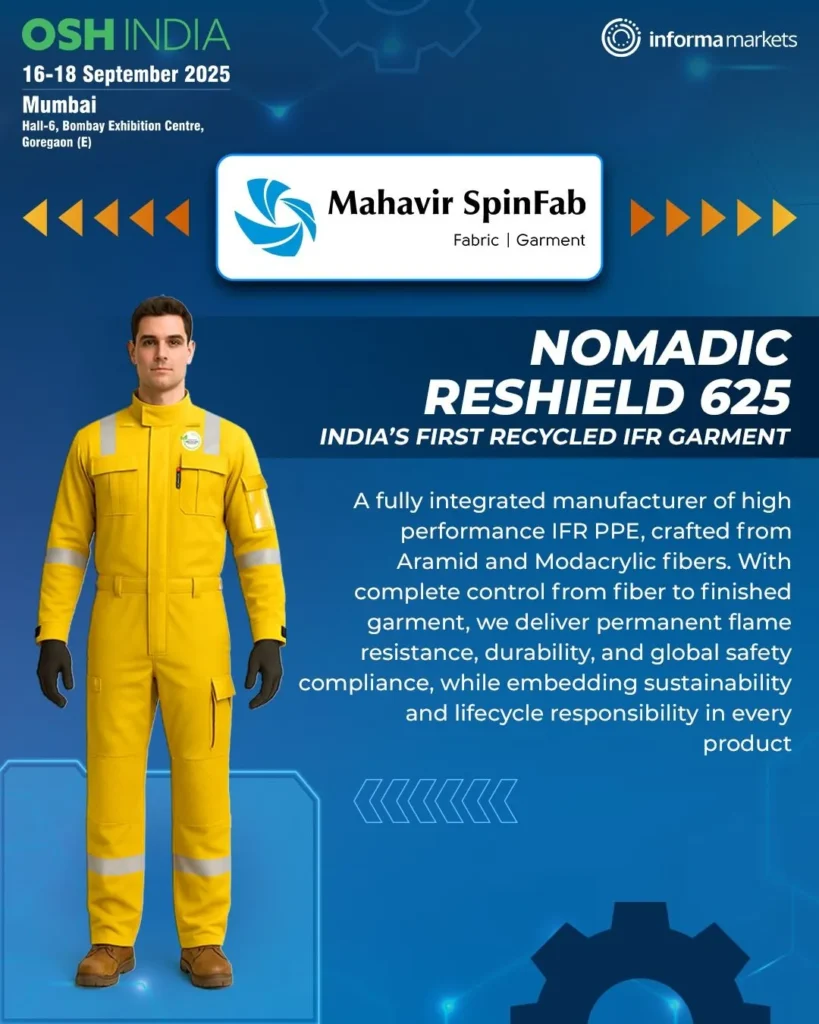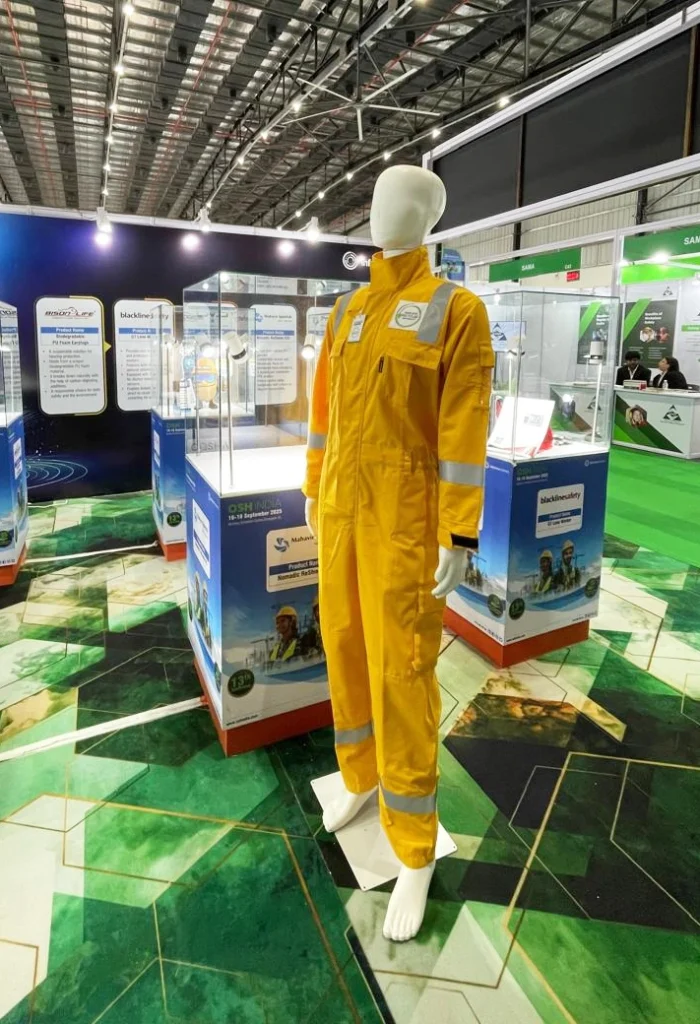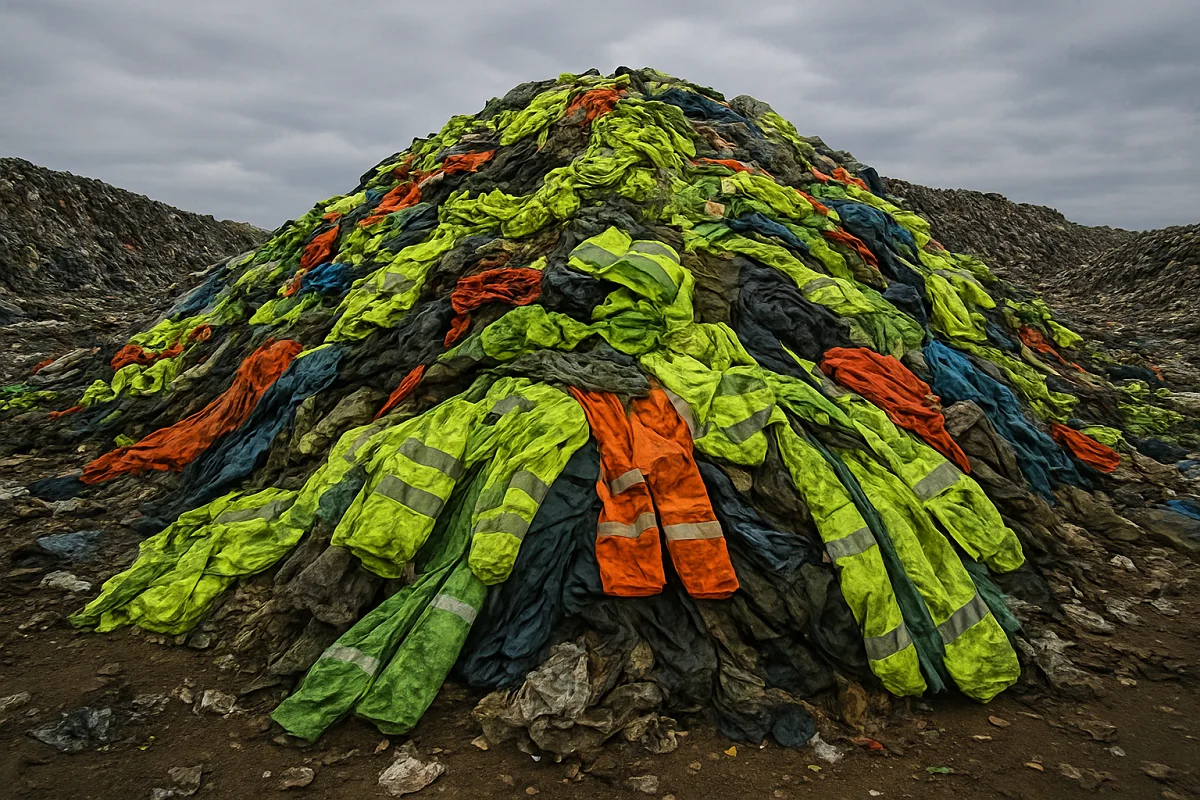India’s First Recycled IFR Garment: The Future of Sustainable Protective Clothing

Big news from OSH India 2025
Mahavir Spin Fab has made history by unveiling India’s first recycled Inherent Flame-Resistant (IFR) garment — a pioneering step in aramid recycling. This game-changing innovation was recognized as the 3rd Most Innovative Product at OSH India, proving that sustainability and safety can go hand in hand.
Why recycle textiles in the first place?
- Market Growth – The global textile market was valued at $610.91 billion in 2023 and is projected to reach $755.38 billion by 2027, growing at a compound annual growth rate of 5.5%, reflecting accelerating global demand and production.
- Waste Generation – The textile industry is responsible for 20% of total global waste, with annual textile waste expected to grow by 60% per year from 2015 to 2030, reaching 148 million tons by 2030. Currently, 92 million tons of textile waste are generated each year, of which 73% is incinerated or landfilled, 25% is reused or recycled, and less than 1% is recycled back into clothing, resulting in a $100 billion annual loss in raw materials.
- Carbon Emissions – The industry emits 1.2 billion tons of CO₂-equivalent greenhouse gases annually, exceeding emissions from all international transport. By 2030, emissions are projected to rise by over 60%, reaching 2.8–2.9 billion tons per year, with two-thirds of these emissions linked to synthetic fiber processing. The fashion sector alone contributes over 10% of global carbon emissions, and if current demand continues, it could account for approximately 25% of global emissions by 2050.
What happens to most end-of-life IFR garments today?
Here lies the hidden graveyard of aramid garments:- Less than 1% of IFR clothing (Kevlar, Nomex, Conex) is ever recycled.
- The majority ends up in landfills or is incinerated.
- > Burning aramids releases toxic gases like hydrogen cyanide (HCN), carbon monoxide (CO), and nitrogen oxides (NOₓ).
- Many garments are classified as hazardous waste because they’re contaminated with oils, and chemicals.
The irony? These garments are designed to be indestructible — a lifesaver for workers, but a nightmare for the planet.
Why is recycling IFR garments such a challenge?
FR workwear recycling isn’t as straightforward as recycling cotton or polyester. Key challenges include:- Non-biodegradability of aramids → they persist for centuries.
- Hazardous emissions if burned.
- Mechanical strength of aramids makes shredding extremely difficult.
- Chemical finishes & blends complicate separation and recycling.
What does Mahavir Spin Fab’s innovation mean for the industry?
By successfully creating recycled IFR garments, Mahavir Spin Fab has:- Proven that a circular economy in textiles is possible even for complex materials like aramids.
- Opened the door for sustainable protective clothing that reduces dependence on virgin fibers.
- Helped cut carbon emissions and prevent landfill waste.
- Positioned India as a leader in flame-resistant clothing waste management.
How does recycling benefit workers and the environment?
- Lower Carbon Footprint – Each recycled garment saves significant CO₂ emissions.
- Less Landfill Waste – Prevents hazardous fibers from piling up underground.
- Safer Workwear Choices – Recycled IFR garments can still meet safety standards.
- Consumer Trust – Certifications like GRS (Global Recycled Standard) assure eco-conscious production.
What’s next for protective clothing sustainability?
The future lies in:- Scaling recycling infrastructure for aramids & IFR garments.
- Collaborations between manufacturers, recyclers, and end-users.
- Smarter collection systems for post-consumer waste (laundries, industries, government).
- Innovation in blends & finishes that are easier to recycle.
The Future is Circular
For decades, the end-of-life plan for IFR garments was a graveyard of landfills and toxic incineration. With this breakthrough, India’s first recycled IFR garment proves a new path is possible — one where safety, sustainability, and circularity come together.The future of protective clothing is not just flame-resistant. It’s planet-resistant.Be Part of the Recycling Revolution
Every step towards recycling helps reduce textile waste and protect our environment.
Join us in creating a greener, safer, and sustainable future.


